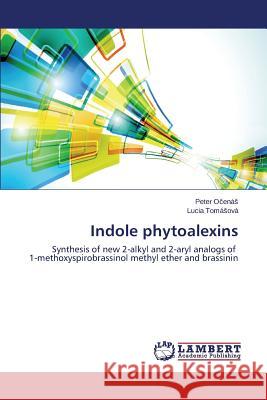Indole Phytoalexins » książka
Indole Phytoalexins
ISBN-13: 9783846591734 / Angielski / Miękka / 2014 / 60 str.
Anticancer properties of naturally occurring (2R, 3R)-(-)-1-methoxyspirobrassinol methyl ether and their synthetic amino analogs inspired us to study the synthesis of new target compounds with a C-C bond in the 2-position of indole rather than a C-N or C-O bond. The goal was efficiently achieved by electrophilic - nucleophilic 3,2-difunctionalisation of 1-methoxybrassinin in the presence of bromine and Grignard reagent leading to the formation of cis-()- and trans-()-C-C analogs of 1-methoxyspirobrassinol methyl ether. The formation of magnesium bromide, during the bromine initiated spirocyclization followed by addition of Grignard reagent, played the crucial role in the formation of acyclic products rather then spirocyclized brassinins. Finally, the anticancer activities of new prepared compounds were measured in order to show the importance of a heteroatom in the 2-substituted indole on the anticancer activity of spirobrassinols and acyclic brassinins.
Anticancer properties of naturally occurring (2R, 3R)-(-)-1-methoxyspirobrassinol methyl ether and their synthetic amino analogs inspired us to study the synthesis of new target compounds with a C-C bond in the 2-position of indole rather than a C-N or C-O bond. The goal was efficiently achieved by electrophilic - nucleophilic 3,2-difunctionalisation of 1-methoxybrassinin in the presence of bromine and Grignard reagent leading to the formation of cis-(±)- and trans-(±)-C-C analogs of 1-methoxyspirobrassinol methyl ether. The formation of magnesium bromide, during the bromine initiated spirocyclization followed by addition of Grignard reagent, played the crucial role in the formation of acyclic products rather then spirocyclized brassinins. Finally, the anticancer activities of new prepared compounds were measured in order to show the importance of a heteroatom in the 2-substituted indole on the anticancer activity of spirobrassinols and acyclic brassinins.











